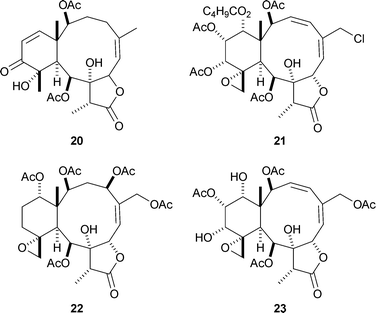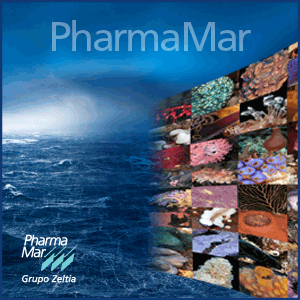
Laura Núñez Pons
PhD Researcher in Marine Biology
Projects
 BioBuil-Ero.jpg |
|---|
 IMG_1637A.jpg |
 ClioErodes.jpg |
 IMG_1575.JPG |
 Interactive CliovsCoral.jpg |
 IMG_1272.JPG |
SymbioFunk
October 2013-Ongoing
PostDoctoral research at the HIMB (University of Hawai’i at Manöa) Hawai’i, U.S.A., Project: “SymbioFunk: Functional biology of microbial symbioses involved in competetitive ecological spacial interactions between bioconstructing scleractinian corals and bioeroding sponges in reef ecosystems”. Hard corals and excavating sponges are major spatial competitors within marine reefs, however this relationship, which lays the basis of bioerosion, is poorly understood.
Interacting organisms are studied in the lab and in the field. The functional role of microbial symbionts is intended to be explored by employing amplicon deep sequencing (ribosomal DNA 16S, ITS-2 and ITS-1) on MiSeq (Illumina) for determination of patterns of bacterial/ archaeal, Symbiodinium and fungal communities composition. Additionally, confocal microscopy will be used for analyzing the distrubution of microbial partners.
 Kaneohe_Bay_Map_Final_ver11.jpg |
|---|
 SpoTransects.png |
 IMG_1309.JPG |
 IMG_1377.JPG |
 IMG_1374.JPG |
 IMG_1367.JPG |
 IMG_1326.JPG |
 IMG_1353.JPG |
 COI-Sponge Barcoding.jpg |
 ITS-1-18S-ITS-2 Primers ITS 1-4.jpeg |
 SPO#1-#24 PCR C-TAB 1-10 dgLCOI PCR14NovMOD.JPG |
 SPO#1-#24 PCR Guanidinium 1-10 RA2-ITS-2.2 PCR19NovMOD.jpg |
 SangerSeq.png |
Kane'oPor
May 2013- Ongoing
PostDoctoral research collaboration HIMB – Università Politecnica delle Marche – Università degli Studi di Genova. Project: “Kane’oPor: Description of the sponge fauna from Kane’ohe Bay". Porifera representatives are in geneneral greatly overlooked in Hawai'i. In an effort to start filling in this gap of knowledge, sponges at K-Bay are being identified by classic morphological taxonomy and with DNA-Barcoding using 3 gene-marker regions: COI (Folmer), COI extension PORCOI2 (Erpenbeck) and 18S-ITS1-5.8S-ITS2-28S (Wörheide). These are recommended for sponges are to be run Sanger sequencing). Species distribution analysis is performed by SCUBA-diving using transect methodologies on the field.
 P2103032.JPG |
|---|
 P2103128.JPG |
 P2062880.JPG |
 PatricioMalito.jpg |
 Transects_Odontiñosos_.jpg |
 P2103036.JPG |
 P2103076.JPG |
 P2103092.JPG |
 25056-21B-40x-i2.jpg |
Odontiña
February 2014-Ongoing
Postdoctoral research collaboration Universitat de Barcelona - HIMB – National Wildlife Health Center USGS Project “Odontiña: Descriptive study of a new potential disease in the Antarctic sea asteroid Odontaster validus”. During the Antarctic cruise ACTIQUIM-4 (Jan-Mar 2013), we realized the incidence of tissue anolalies in sea star populaitons. We decided to address this case as a potential emerging disease. Histopathology analysis of tissue samples from healthy and affected (sea stars with morphological signs of desease) specimens shoed no conspicuous prokariotic or eukariotic infections. We now plan to perform characterization of microbial communities integrating deep sequencing (ribosomal DNA 16S) on new generation sequencing platforms, MiSeq (Illumina) and PacBio for bacterial (16S) fungi (ITS-1) and virus (metagenomics), in the search for candidate pathogenic agents; along with histological studies using as imaging, optic, electronic (SEM, TEM), and confocal microscopy
 Setup_AiptásticoLabControl75Days.png |
|---|
 Melenudos Aiptasiacs.jpg |
 Bleaching.jpg |
 Apos cute.jpg |
 AiptiBaby in Cuna 2.jpg |
 Tentáculo_Symbio.jpg |
 Aiptasia A,B,C and Wilds Dil-10 28 May 2014.jpg |
 Alignment A1-SymbioB1.jpg |
ThermoSymbio
November 2013-Ongoing
PostDoctoral research collaboration on the project "ThermoSymbio: Regulation of Algal-Cnidarian Symbiosis" with Santa Monica College - HIMB (University of Hawai’i at Manöa). We use the anemone Aiptasia pulchera as a cnidarian-Symbiodinium model to address bleaching tolerance. We perform field and laboratory work using A. pulchera as a model to study heat stress bleaching effects on the physiology and symbiont community. We apply physiological analyses, as well as molecular techniques of amplicon deep sequencing (ITS-2) on MiSeq (Illumina) for clade determining of Symbiodinium community.
 K-Bay RTarget Reefs.png |
|---|
 P.comp_tagged.JPG |
 MonitoringK-Bay.png |
 M_cap04.jpg |
 MetabExchCoralHolobiont.png |
 P_comp02.jpg |
 TaggedColonies.png |
 DNA Coral Ext.png |
 Seq2DNABarcodes.png |
 BleachRecovResist.png |
K-Bay Bleach
September 2014-Ongoing
Gates Lab HIMB–Unietsity of Hawai'i.
K-Bay Bleach: "Staying Alive: Molecular and physiological patterns of coral bleaching, recovery and resistance after a natural thermal stress event".
Crowdfuing Projetc: IPs: Raphael Ritson-Williams, Laura Núñez Pons, Ross Cunning.
https://experiment.com/projects/stayin-alive-how-do-microbes-help-corals-recover-from-bleaching
This past summer (September 2014) the seawater temperatures raised up to 31ºC, leaving a massive coral bleaching in Hawai'i (~70% affected colonies). Profiting this natural episode, two reserachers and myself decided to monitor how microbes in corals behaved during bleaching, and recovery. Further, colonies which did not bleach are also studied to disentangle what microbial pattern makes them resistant. We tagged 150 colonies, half of susceptible to bleaching, and half resistant. Now we are analyzing their microbial content, to determine which combinations of microalgae and bacteria are lost in the bleaching, and how are they recovered. Also we will analyze what are the "winner" microbial compositions that afford resistance to corals to face the predictions of climate change, for our future reefs.
 logo35distantcom.jpg |
|---|
 logo distantcom_Leiva.jpg |
DiStAntCom
2011-2013
Universitat de Barcelona.
DiStAntCom: "Diversidad y Estructura de Comunidades Bentónicas Antárticas". CTM2013- 42667/ANT.
IP: Dr. Conxita Avila.
 Abstract_Toon_MD_Chica&Limoná.jpg |
|---|
 Estres vs Felips.jpg |
 Aplidium fuegienseFijada.JPG |
 Rossinoni B-E Articuliscio.jpg |
 Rossinone B.jpg |
 120.JPG |
 Illudlanes 1-9.jpg |
 Illudalanes 10-11.jpg |
 Waxes Alcyonum spp.jpg |
 A. falklandicum fons negre.jpg |
 Meridianinas nomi Gran.jpg |
 IMG_2743.JPG |
ACTIQUIM-II
2011-2013
Universitat de Barcelona. "ACTIQUIM-II: Actividad ecológica de productos naturales marinos del bentos antártico: ecología química in situ, potencial farmacológico y alteraciones causadas por la actividad humana". CTM2010-17415/ANT.
IP: Dr. C. Avila. Continuation del ACTIQUIM-1. Antarctic organisms make an extended use of bioactive metabolites, for chemical defense. In this project, including 2 Antarctic cruises (ACTIQUIM-3 and -4), we aimed on disentangling such products chemically and determine their ecological activities by performing in situ experiments (see ACTIQUIM-I bellow) with marine Antarctic biota. Several new compounds were discovered and their bioactivities were described.
 epibiosi1.jpg |
|---|
 PS65-253#1.JPG |
 #850-1 Rossella villosa.JPG |
 #1151-3 Rossella cf. vanhoffeni.JPG |
 #987-2.JPG |
 #920-3.JPG |
 Cholestan tan tan + GSL 2a-b.jpg |
 TLC's Rossellinis-nis D.jpg |
 LC-MS Elegante.jpg |
 Spettri-ni Rossella Ant A+,B+ A.jpg |
 Árbol_Genialilógico_Rossellini-ni_+-*_2ab.jpg |
REDES
06/2010-08/2010
"REDES: Spanish Network of Diversity"; Systemic evolution of working plan for assistance; (REDES) CTM2009-06185/E. 2010.
IP: Dr. H. Dopazo.
This short project allowed to perfomr a stage at the ICB-CNR Pozzuoli, Napoli (Italia), where a number of chemical analyses and quantifications (chromatography, LS-MS, MS, NMR) were performed on Antarctic hexactinellid sponges. Several metabolites were isolated showing charateristic deterrent properties agains potential predators, while other primary metabolites of the glucosphingolipid family showed a value in chemo-taxonomical approaches.
 Conxitos Teletubis.JPG |
|---|
 Cálico_Volccánico.JPG |
 Odontaster Bakanal.jpg |
 Felipodín.jpg |
 Plocamium_cartilagineum.JPG |
 A._falklandicum2.jpg |
 Meridianins A-G.jpg |
 S.adaranum2.JPG |
 Alcyonaria #1152.JPG |
 Alcyopterosins (Illudalales).jpg |
ACTIQUIM
2008-2010
"ACTIQUIM-I: Actividad ecológica de productos naturales marinos del bentos antártico: ecología química in situ", CGL2007-65453/ANT.
IP: Dr. C. Avila.
"ACTIQUIM-I: Ecological activity of marine natural products from the Antarctic benthos: in situ chemical ecology". This project embraced 2 Antarctic campaigns at Deception Island (South Shetland Archipelago). The aim was to describe the chemical defenses in bethic organisms agains predation, microbial invasions, and competition in a broad manner. Most of the best represented species demonstrated the use of defensive metabolites, and several molecules were discovered as new carbon skeletons for science. Moreover, new protocols were designed for chemical ecology experimentation.
 Biofouling-time.jpg |
|---|
 Biofouling.jpg |
 Ircinia oros.jpg |
 Phyllidia flava.jpg |
 Antifoulants tun tun.gif |
Antifouling
2005-2007
Isolation of bioactive marine natural products with antifouling properties. HG-2005-0027. Acción Integrada (España-Grecia).
IP: Dr. C. Avila & Dr. V. Roussis.
A collaborative project between Greece (University of Athens) and Spain (Universitat ede Barcelona) with the intention to study antifouling natural products from marine organisms in the Mediterranean. Several species were analyzed, demonstrating effective chemical properties to avoid massive epibiosis.
 Antarctica ca.jpg |
|---|
 polarstern harrr.jpg |
 Orgía_de_Thouarellas.jpg |
 El_Trío_Mercadillo_a_bordo!.JPG |
 banner_Pharmamar.gif |
 Austrodoris kegelenensis.jpg |
 DCP_3133.JPG |
 Bottom trawl.jpg |
 PS65-90#185-1.JPG |
 PS65-161#438-2.JPG |
 PS65-245#677-2.JPG |
 PS65-297#1180-4 Thouarella sp1.JPG |
 F_rossi.jpg |
 Por_los_Pólipos_de_mi_agüela.jpg |
 THOUARELLA DE LA OLLA.jpg |
ECOQUIM-2
2005-2007
"ECOQUIM-2: Ecología química de invertebrados antárticos- 2." CGL2004-03356/ANT . 2005-2007. IP: Dr. C. Avila. C. Avila.
ECOQUIM-2: Ecología química de invertebrados antárticos- 2. The project accounted with two Antarctic cruises, one on board the Polarstern and to the Weddell Sea, and a second one to the South Shetland Anrchipelago on board the BIO-Hespérides. Intense collections of benthic marine organisms was performed to study the chemistry. Moreover, chemical defenses agains predation were investigated using the common key stone predator, the sea star Odontaster validus as experimental model in the most representative taxa. Repellent activities derived from chemical agents were highly common among potential prey organisms to avoid or reduce predation pressure.